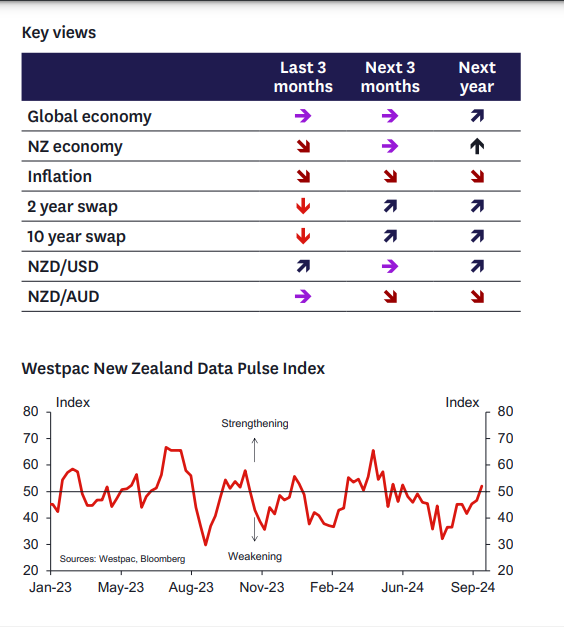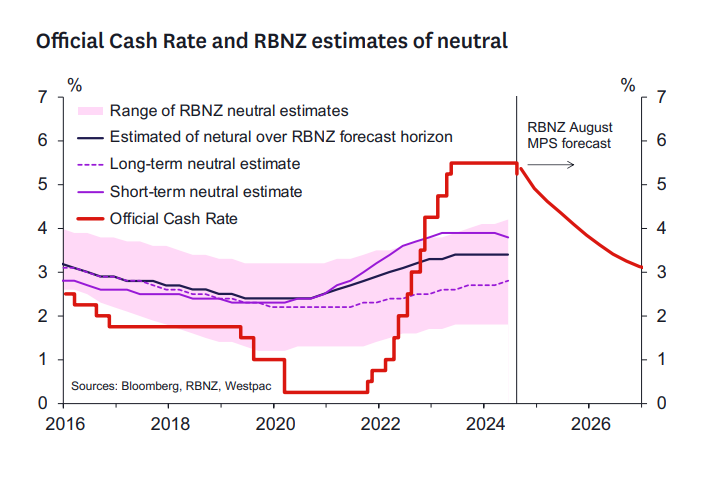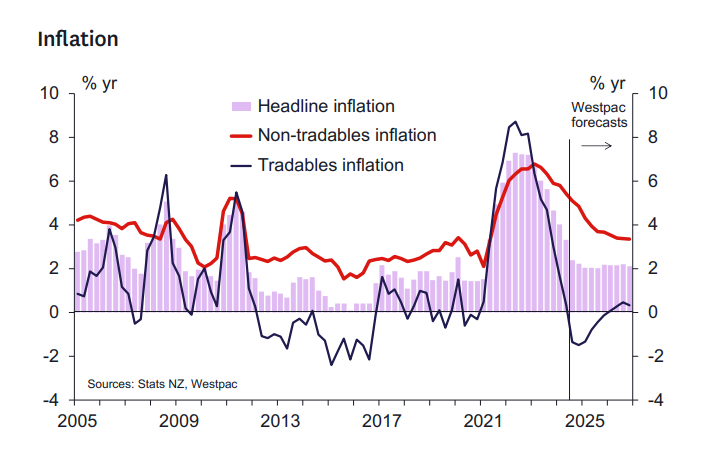How far and how fast will rates fall?

In Westpac’s latest weekly economic commentary, senior economist Kelly Eckhold (pictured) outlined the Reserve Bank of New Zealand’s (RBNZ) move into an easing cycle.

The central bank’s August policy statement suggested the OCR could fall by 60 basis points in 2024 and 110bps in 2025.
Eckhold said that while RBNZ’s forecasts point to measured 25bps reductions, financial markets anticipate a more aggressive path, with a 50bps cut likely before year-end.
Cautious approach: Inflation risks and economic stability
Eckhold considered the argument for a cautious approach, noting, “There are reasonable arguments for moving either more cautiously or more aggressively.”
The strength of non-tradables inflation remains a key factor, with June’s figure at 5.4%, excluding housing and insurance costs.
The economy has softened, but not as much as anticipated, suggesting there’s less slack than RBNZ had initially assumed. This, Eckhold argued, supports a gradual rate-cutting strategy.

Falling inflation strengthens the argument for deeper rate cuts
On the other hand, the report highlighted the case for quicker cuts.
“Inflation has already fallen from over 7% in 2022 to 3.3% in the June quarter,” Eckhold said, with projections for further declines.
The slowdown in GDP growth since late 2022 and the growing output gap indicate that demand is significantly restrained. A faster reduction in rates could help stabilise domestic demand, preventing further economic downturns.

Labour market weakness adds pressure for easing
The report pointed to the softening labour market as a potential trigger for more aggressive cuts. Unemployment climbed to 4.6% in the first half of 2024 and is forecast to hit 5.3% by year-end.
Eckhold noted that indicators such as job ads and filled positions are signaling further labour market weakness.
“Employment confidence is low in many regions, reflecting widespread job losses,” Eckhold said.
Work-from-home trends reshape spending habits
Eckhold also addressed how work-from-home (WFH) trends have impacted consumer behaviour.
Data from Seek showed that around 9% of job listings now offer WFH options, up from just 1% pre-pandemic. This shift has dented spending in city-center restaurants and bars, with suburban areas and delivery services benefiting.
However, the report highlighted that inflation and rising interest rates have had a greater impact on hospitality spending, particularly as households face financial pressures.
Access the Westpac weekly commentary here.
Get the hottest and freshest mortgage news delivered right into your inbox. Subscribe now to our FREE daily newsletter.



